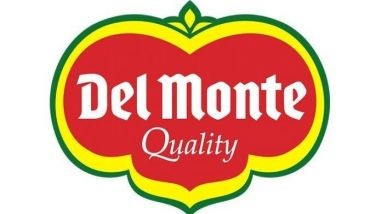Top central bankers
New York-based Global Finance magazine has chosen Bangko Sentral Governor Dr. Eli Remolona Jr. as one of the world’s 25 best central bankers for 2024.
The 25 Best Central Bankers, out of about 100 considered, are in three categories – “A+” (three winners); “A” (seven), and “A-“ (15).
Remolona is grouped with the 15 “A-“ listers, namely, in alphabetical order (by country): Cambodia, Chea Serey; Canada, Tiff Macklem; Costa Rica, Roger Madrigal Lopez; Dominican Republic, Héctor Valdez Albizu; European Union, Christine Lagarde; Guatemala, Alvaro Gonzalez Ricci; Indonesia, Perry Warjiyo; Jamaica, Richard Byles; Jordan, Adel Al-Sharkas; Mongolia, Byadran Lkhagvasuren; Norway, Ida Wolden Bache; Peru, Julio Velarde Flores; Sweden, Erik Thedéen; USA, Jerome Hayden Powell and the Philippines, Eli Remolona.
The three who got “A+” (the highest) are: Denmark, Christian Kettel Thomsen; India, Shaktikanta Das and Switzerland, Thomas Jordan.
The seven “A” graders are: Brazil, Roberto Campos Neto; Chile, Rosanna Costa; Mauritius, Harvesh Kumar Seegolam; Morocco, Abdellatif Jouahri; South Africa, Lesetja Kganyago; Sri Lanka, Nandalal Weerasinghe and Vietnam, Nguyen Thi Hong.
“Central bankers have waged war against inflation over the past few years, wielding their primary weapon: higher interest rates. Now, countries around the world are witnessing the tangible results of these efforts, as inflation has dropped significantly,” said Global Finance founder and editorial director Joseph Giarraputo. “Global Finance’s annual Central Banker Report Cards honor those bank leaders whose strategies outperformed their peers through originality, creativity and tenacity.”
The full Central Banker Report Cards 2024 grade list will appear in Global Finance’s October print and digital editions as well as online at GFMag.com.
The Central Banker Report Cards are based on an “A+” to “F” scale for success in areas such as inflation control, economic growth goals, currency stability and interest rate management. (“A” represents an excellent performance, down through “F” for outright failure.)
Global Finance, founded in 1987, claims a circulation of 50,000 with readers in 193 countries. Global Finance’s audience includes senior corporate and financial officers responsible for making investment and strategic decisions at multinational companies and financial institutions.
Eli Remolona took over as the seventh BSP governor and Monetary Board chair on July 3, 2023. He deserves a better rating than A-.
Governor Eli is classed with the central banker chiefs of countries which are among the worst performing economies in the world. So sometimes, it’s like being honored for surviving a sinking economy. The Philippine economy is among the best performing in Asia.
Take Sri Lanka, whose long-time CB governor and deputy governor, Namdara Weerasinghe, an economist (MA and PhD.) got an even higher rating, A, than Gov Eli.
Per Google, the Sri Lanka “economy contracted by 9.5 percent in total during 2022 and 2023; public and publicly guaranteed debt ballooned to 119.2 percent of Gross Domestic Product (GDP) in 2022 amid high inflation (46.4 percent, annual average in 2022) and a sharp currency depreciation (81.2 percent, 2022). As of July 2024, Sri Lanka’s poverty incidence was 24.8 percent, up from 6.7 percent poverty line in 2014.”
In contrast, the Philippine economy grew 6.3 percent in the second quarter (6.1 percent since President Marcos Jr. became president on June 30, 202), its debt-to-GDP ratio has hit 60.1 percent, its inflation averaged 3.5 percent in January-June 2024 and the peso has depreciated by a minuscule 0.3 percent (to P57 to $1 as of Aug. 14, 2024).
Poverty incidence has dramatically declined, to an unheard of 15.5 percent (17.54 million Filipinos) from 18.1 percent (19.99 million Filipinos) in 2021, equivalent to 2.45 million Filipinos rescued from poverty. In terms of number of families, poverty incidence is now 10.9 percent, down from 13.2 percent in 2021.
Reserve Bank of India Governor Shaktikanta Das has the top rating, A+, for the second year in a row. India has the same inflation rate as the Philippines (3.5 percent), has a higher interest rate (6.9 percent vs. 6.2) and higher currency depreciation rate (1.2 percent vs. 0.3 percent for our peso in the same period). However, India has a higher economic growth, 7.8 percent in first quarter 2024. India’s poverty incidence has fallen to 5 percent.
Dr. Remolona has a PhD in Economics with distinction, Stanford, and took Economics, honors, from Ateneo de Manila.
Dr Eli has been the most vicious in sticking to inflation targeting policy of high interest rates despite global signs he should be cutting rates now. From 2 percent in 2021, the BSP has more than tripled its overnight reverse repurchase facility interest rate to 6.50 percent on Oct. 6, 2023, a 17-year high. The rate was cut to 6.25 percent on Aug. 22, 2024.
Steep interest rates mean higher cost of credit, higher cost of investment, higher cost production and higher food costs.
Under the previous Central Bank of the Philippines (1949-1993), one of the main functions of a central bank was to promote a rising level of production, income and employment. Under the present BSP, inflation targeting became the fixation.
BSP governors became glamorized bean counters, focused on the trees rather than the forest.
The Philippine banking system was the pioneer and largest in Asia. Today, it is one of the smallest in terms of resources, deposits and loans. A single bank in Singapore (DBS, with $567 billion) has more resources than the entire Philippine banking system ($461 billion).
The richest Filipinos invariable own a bank. As of June 2024, bank owners have put in only P3.16 trillion of capital but managed to generate P26.19 trillion in assets (8.3x capital), P19.5 trillion in deposits (6.17x capital) and P14.319 trillion in loans (4.53x capital).
Despite getting P19.5 trillion of our money, banks lent out only P14.3 trillion, a P5.2-trillion shortcoming that could have solved our food crisis. In the last 20 years, the food shortage was worth only P1 trillion.
* * *
Email: [email protected]
- Latest


























